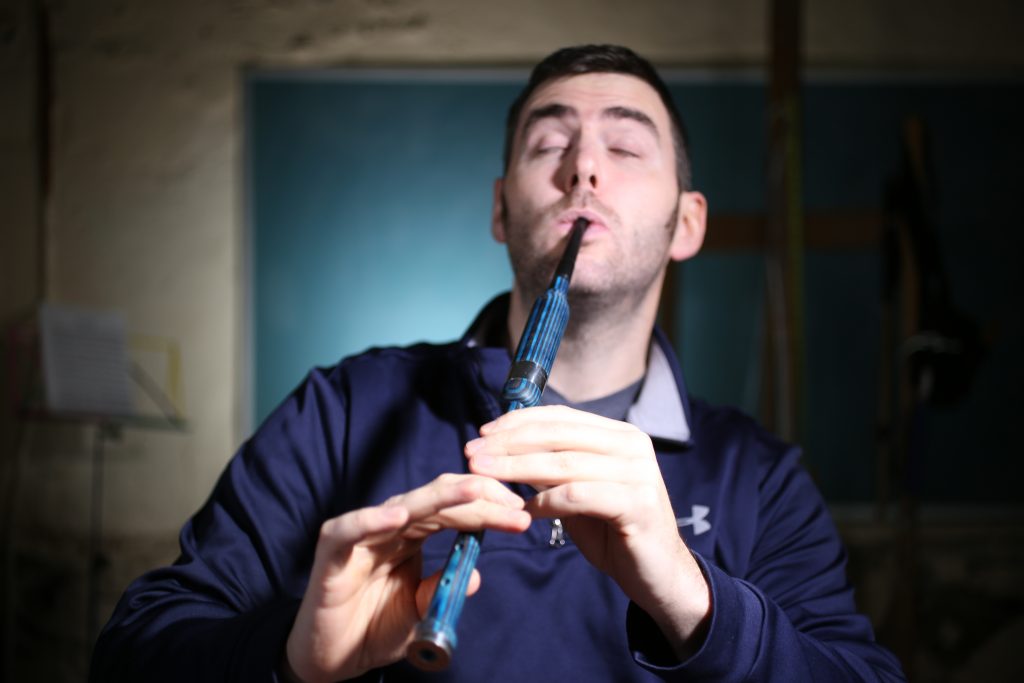Crossing Noises: More Than You Might Want to Know

If you are relatively new to piping, you might be trying hard at this point to eliminate crossing noises as you transition from one note to another. But even for more experienced pipers, a pesky crossing noise may find its way into our piping. Here are some thoughts on how to analyze and get rid of crossing noises.
We all know that a crossing sound, or “noise”, is produced when there is an extra and unwanted sound that occurs during the transition from one note to another. Any note change must have only two sounds, note 1 then note 2. If there is any other sound that is part of the transition between two notes, that’s a crossing noise. Some pipers erroneously think that crossing noises pertain mostly when “crossing” from a bottom hand note to one on the top hand, or vice versa. But crossing noises may occur far more than we may think, and a little bit of analysis gives us much more complete information about when and how they occur.
A few classes here at Dojo University discuss the myriad possibilities of crossing noises. There are three distinct types with different characteristics:
1. Lift/drop crossing noises. This type may occur when changing from one note to another that involves lifting at least one finger, and dropping one or more fingers. An example here would be going from Low A to C. Both are bottom hand notes, but this transition requires dropping the Low A finger (pinky) and lifting the C and B fingers, all simultaneously.
2. Rolling crossing noises. A rolling crossing noise is made when one “rolls” from one note to another but inadvertently passes through another note. A great example is the transition from Low G to B. To make this note change cleanly, the Low A and B fingers must be lifted precisely together to form the B. A rolling crossing noise occurs when the Low A (pinky) finger is lifted first, followed by the B finger, then finally landing on the B. There should be only two sounds, Low G to B, not three sounds. Try this note change on the practice chanter.
3. Phantom crossing noises. This type of crossing noise is more subtle, and may not be as obvious, depending on the piper’s experience. Essentially, a phantom crossing noise involves false fingering of a note. For example, when playing a series of High As interspersed between other notes, one must be careful to always return the bottom hand to its “home position” each time a High A is played. Fingers that are slow to return produce an altered, or "phantom," sound of the note. Another common example is to play an “open” C, with only the D finger down, instead of both the D and Low A fingers down. It might not sound "too bad" on the practice chanter, but it will be audible on the pipes.
Carefully considering every note change from any of the nine chanter notes to any other note, there is a total of 36 such note changes. Going from D to High G involves the same fingers as going the other direction from High G to D. Even though in one direction the fingers may be dropping, and in the other direction the fingers may be lifting, we are considering that as one of the 36 possible note changes. In one particular Dojo U class, we listed all of the possible note changes, starting with Low G to Low A, Low G to B, Low G to C, etc., then Low A to B, Low A to C, Low A to D, and so forth, until all note changes were recorded. Interesting, of the 36 note changes, only six involve moving only one finger. Thus, a crossing noise is impossible in those situations. Examples in this case include going from Low A to B, or D to C. Can you name the other four? More importantly, for the 30 other note changes, 83% (30 of 36) have a possibility to have at least one or more types of crossing noises. Some note changes have the potential to have any of the three types, or even a combination, such as F to High A, or from C to F, where lift/drop, rolling, or rolling crossing sounds could occur.
There are a couple of suggestions that may help to eliminate a few crossing sounds, especially between bottom and top hand notes. By the way, it is entirely appropriate in the early learning process to look at your fingers as you play the practice chanter. But it is also a good idea if you are a bit more experienced and discover a particular pesky crossing sound in a new tune that you are learning. A very common crossing noise, going in either direction between bottom and top hand notes, involves making an inadvertent Low A during the note change. Low A is a very loud note, and like most crossing sounds, will be especially loud (honking is also a good adjective!) when accidentally played on the pipes. Analyzing how to eliminate a Low A sound a bit farther, let's consider going from a Low G to E, for example. This note change requires lifting the Low A finger (bottom hand) at the same time as lifting the E finger (top hand). But, if the E finger comes up even the tiniest bit late during the note change, a short but loud Low A sound has been created between the sounds of the Low G and the E. Avoid making a Low A at all costs. Hint: going from Low A to E, lift the E finger a fraction of a second earlier than the Low A finger. Doing so eliminates any possibility of making an accidental Low A. As with all crossing sounds, learn to recognize their sounds. When you identify an unwanted noise, watch your fingers as you carefully play the offending note change so that you can examine what your fingers are doing incorrectly.
Lastly, it’s one thing to get rid of crossing sounds by playing up and down the scale, but it’s an entirely different challenge to play the various combinations of note changes that occur throughout our music. Record yourself, and listen carefully. Determine where a note change is not clean, and get rid of the problem right away. We do not want to ingrain crossing noises into our muscle memory. We owe it to ourselves to eradicate crossing sounds, because proper scale navigation (clean note changes) is a prerequisite for all other fingerwork fundamentals.
Take Action
For more information about scale navigation and crossing noises, Dojo U Members can tune in for any of our live classes (crossing noises are a regularly discussed issue!), or check out the Beginner's Tutor, Daily Doses and Phase 2 of the Bagpipe Freedom Process (even though it's likely your Phase 1 skills – i.e. rhythm – that are causing your crossing noises in the first place!).
Not a Dojo U Member yet? Where have you been? We'd love to welcome you to our global community of lifelong piping learners – learn more about how to join today!






Responses